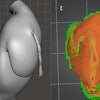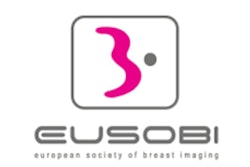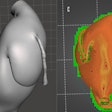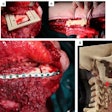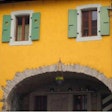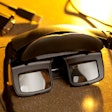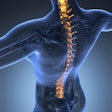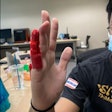A wearable corset-style vest could be helpful in improving mammography training, according to research being conducted at the University of Udine in Italy.
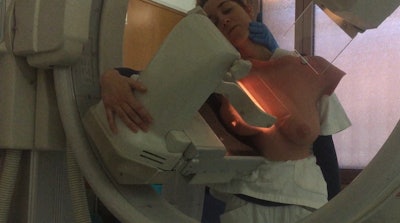 Example of positioning for the oblique mediolateral projection, showing body posture and patient comfort. Courtesy of Angie Devetti et al and presented at ECR 2024.
Example of positioning for the oblique mediolateral projection, showing body posture and patient comfort. Courtesy of Angie Devetti et al and presented at ECR 2024.
A team led by Angie Devetti, a radiography lecturer, has described the training vest, which in a qualitative study has proved to be an effective tool for teaching radiography students about mammography placement.
“Teaching our students to be prepared radiographers in senology will be a core competency,” she told AuntMinnieEurope.com. “I hope that we are able to, of course not to reach the standards that are required to the working force, but get a little bit closer.”
Anthropomorphic phantoms are used in training to mimic the structure, consistency, and radiographic characteristics of the breast. The researchers also highlighted that the development and reduction of costs associated with the use of 3D printers with appropriate materials is proving to be a valuable resource in the field of quality and training controls.
“Thanks to the COVID-[19] experience, the role of realistic pre-internship training is more relevant,” Devetti said.
Devetti and colleagues sought to explore the efficacy of a wearable breast vest in teaching mammography placement to third-year radiographer students in small groups. The vest is a realistic cast of a female torso with medium-sized breasts used to teach and practice the breast self-examination test. It features two soft, flexible breast cushions that allow the student to feel the breast tissue.
Devetti said the students reacted positively to their lab experience using the vest. The team highlighted that following the tutor's technical demonstration of the vest, every student was able to calmly test and retry the different projections.
The researchers added that some students indicated that the training was adequate, while others would have liked a few additional hours, possibly to watch real mammograms and evaluate the presence or absence of accuracy criteria.
Devetti said that in the future, the team would like to incorporate vests of distinct characteristics, such as breast size and density, into training. She said the researchers have contacted the vest’s manufacturer (3B Scientific) regarding this.
“This may be the best solution, something that students can wear and practice with,” she told AuntMinnieEurope.com. “It’s important for us radiographers not only to imagine what an examination is but also be the one being examined.”
The study findings were presented at ECR 2024 and can be found here.
